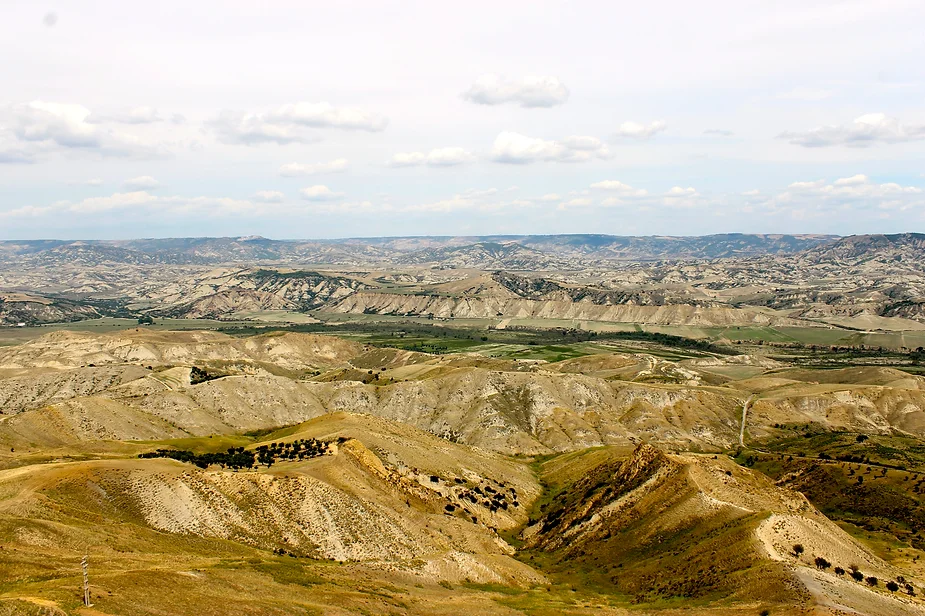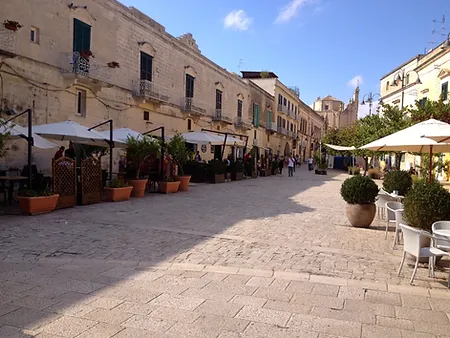
The Sassi of Matera, I read in the guide book, were developed by its inhabitants over the centuries in a manner that is now called “Spontaneous Architecture”. It seems to conform to the natural environment, and yet in the mess of stone, it is wonderfully exciting to discover sophisticated and elegant styles of architecture in the facades of some of the homes and churches. Certainly, it is a form of urban planning that strikes my attention, for it creates a surreal landscape reminiscent of the emotions stirred before certain modern abstract paintings.
A man in a soiled jacket and a gurgling cough approaches, pleading for a few euros in exchange for a tour. He has memorized the more salient details of Matera’s history which he proceeds to declaim in a monotonous singsong. I glean some information: The first dwellings were of the Neolithic inhabitants of the region, who transformed the natural landscape into new forms of architecture. In time, however, by the end of the eighteenth century, the natural equilibrium of the environment begins to decompose and fall apart with the slow and relentless destruction of the ecosystem. What’s more, the rocky landscape is unforgiving, not allowing water or sewage systems to be built. Much worse, the land around this corner of Basilicata yields little. There is virtually no industry. By the first part of the 20th century, the State has forgotten about this region of rural Italy. Overwhelmed by social injustice and political indifference, Matera and much of the whole of Basilicata becomes fraught by the grey nightmare of abandonment.
There is a disquieting recognition in all this that I hear. This is the story told by Carlo Levi in his starkly beautiful account, Cristo Si e’ Fermato a Eboli (Christ Stopped at Eboli), of a place beyond hope and a people abandoned by history and by God. It was here in primitive Basilicata, at the start of the Ethiopian war (1935), that Carlo Levi, doctor, painter, philosopher, and man of letters, was confined as a political prisoner because of his uncompromising opposition to Fascism. In his literary masterpiece, Levi makes an poignant and penetrating commentary on Basilicata’s “isolation and seemingly anachronistic coexistence between ancient and contemporary civilization that (perhaps deliberately) serve to estrange the population from the rest of the nation and, consequently, results in their perennial marginalization (if not, exclusion) by the ruling government” Acquarello 2004. Levi denounces the life of the last inhabitants of I Sassi as a “national embarrassment”. Of course, the meaning of the title, now becomes clear to me: Christ could not possibly have visited Italy’s bleak south. The unyielding landscape, the inhumane life conditions, people overwhelmed by social injustice living in this strangely concocted anthill city, had all but been forsaken by God.
As a result of Levi’s post-war book, Italy seemed to re-consider its pathetic neglect of
the Basilicata region. In the 1950s, the population was relocated en masse to a modern town on the plateau above the ravines. The old cave city, abandoned by all save a handful of the most destitute squatters, became a phantom city.
Then in 1993 UNESCO deemed Matera a cultural heritage site, a universal patrimony, to be preserved for all mankind. In 1998, like a phoenix rising from its own ashes, I Sassi was reborn.
Today, cave dwellings are being turned into four-star hotels; the heavy wooden doors of cave churches are being thrown open once again; the walls of vast caverns have been slapped with whitewash and become pizza bars; new owners build modern balconies on their ancient homes—balconies blessed with magnificent panoramas; and film directors come searching for new and distinct settings.
Not far from Matera, ancient fortresses built against invading Turks and “masserie” such as the newly built TorreFiore in Pisticci, are being transformed into destination resorts of five star quality. Infinity pools are strategically placed to allow the gaze of the weary traveler to dwell upon majestic canyons of both rugged terrain and mystical beauty. A setting that invites the eye to search for a new and distinct measure of beauty.
I’ve come searching too. And I have found a part of me which I did not know.
As evening begins to fall, Matera, no longer drenched in brilliant light becomes just one of many other towns on the cliff in this vast panorama at once imposing and silent. A land of contrasts, with a tragic poetic voice. Poetic, nevertheless.
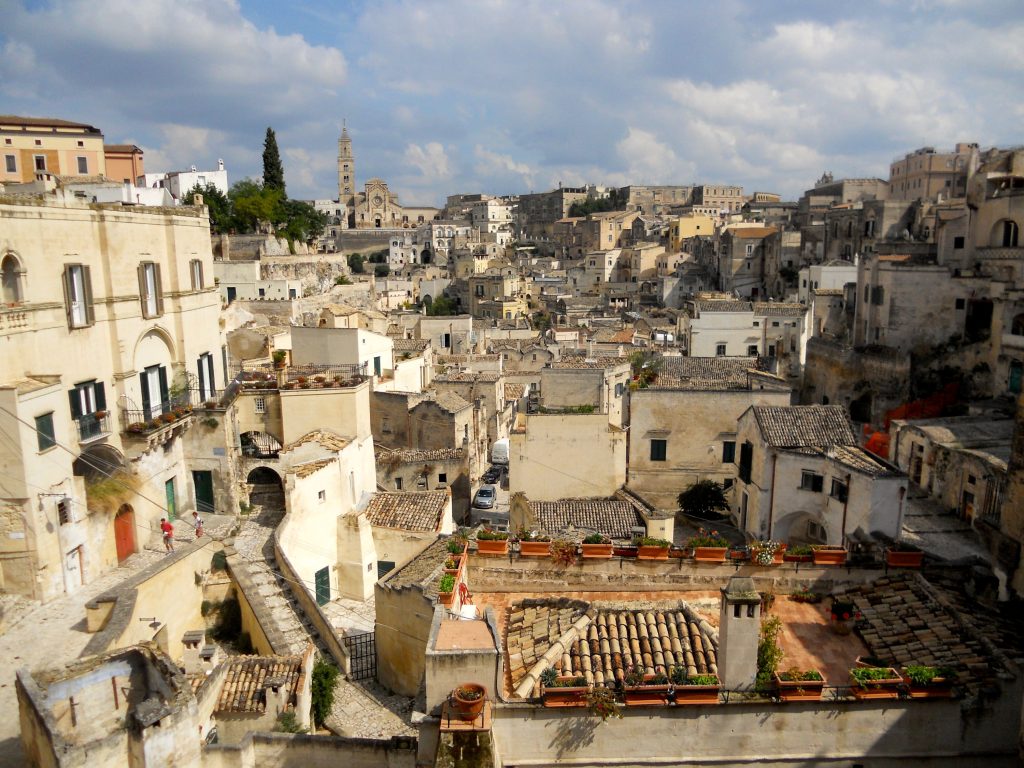
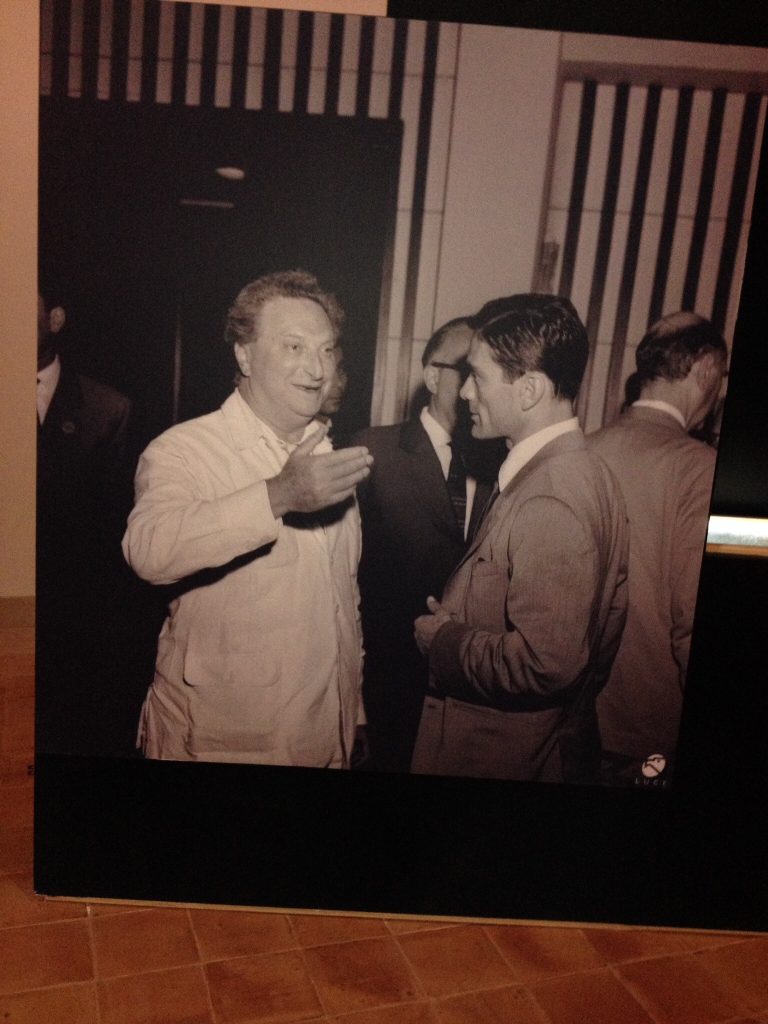
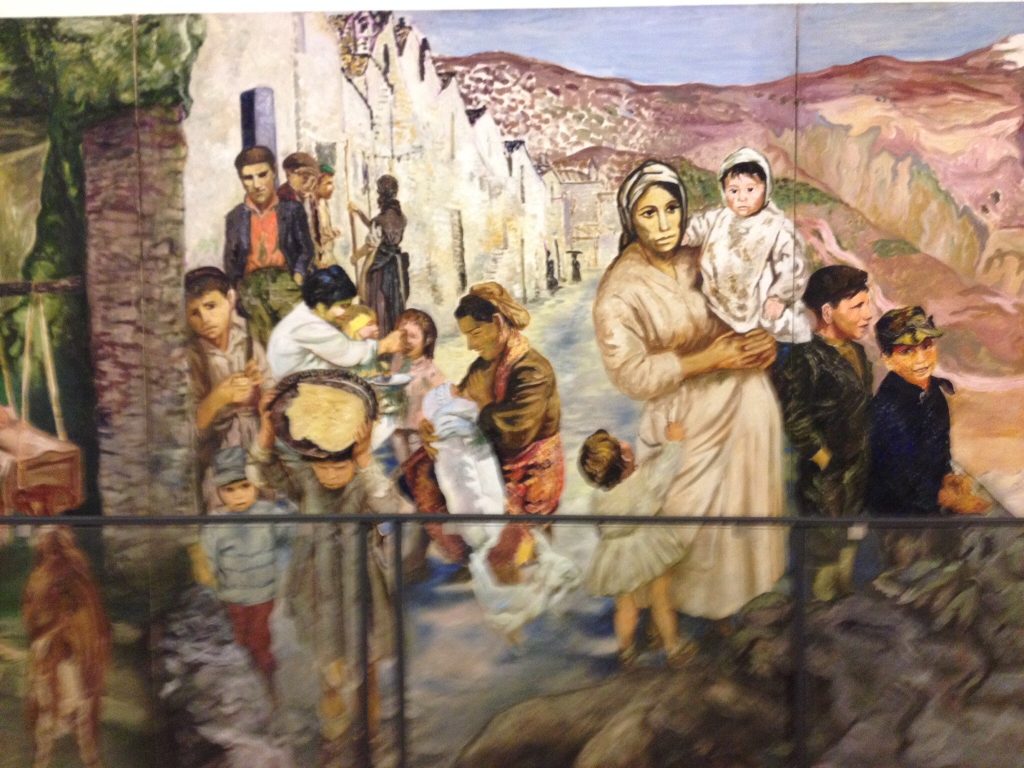
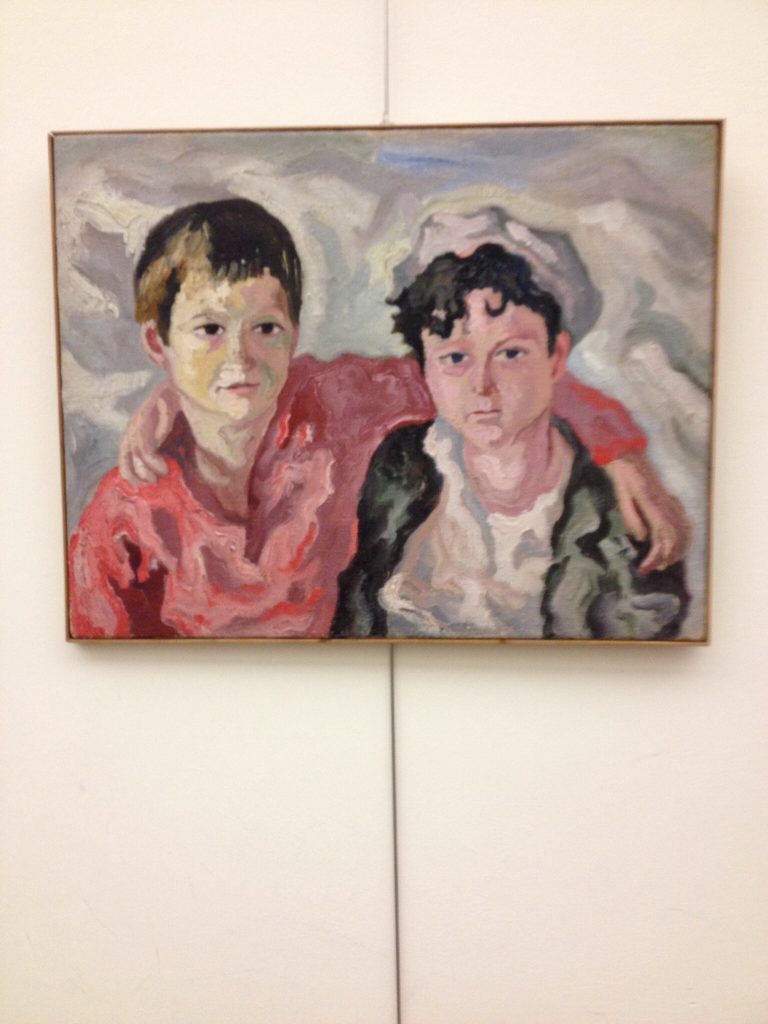
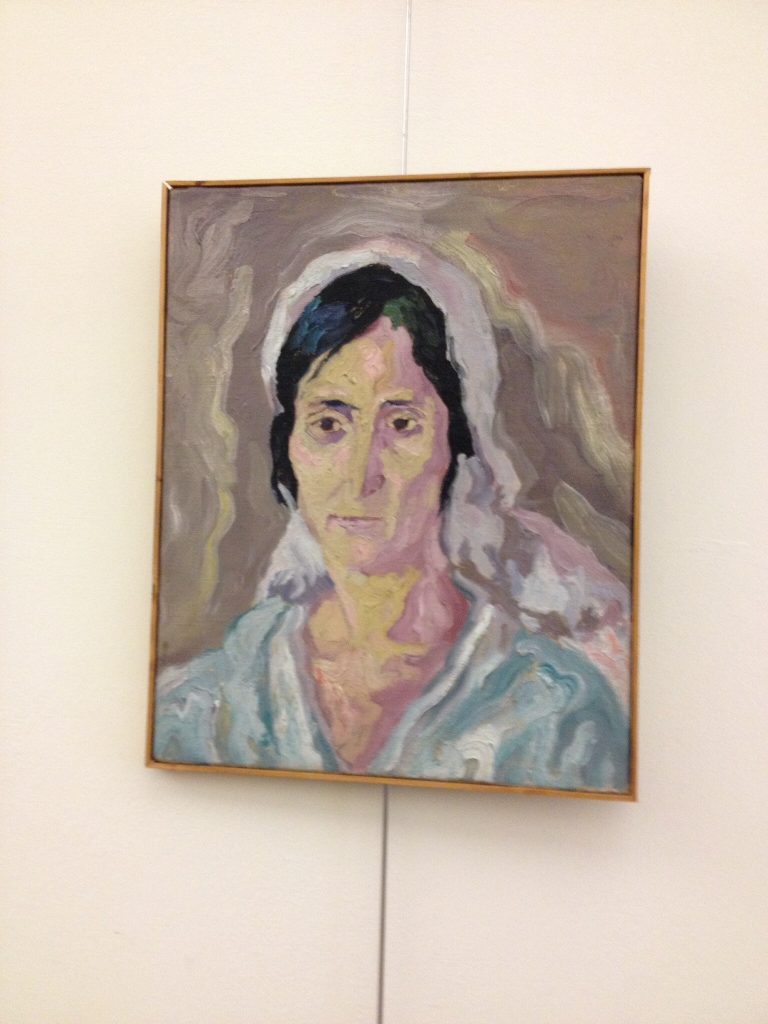
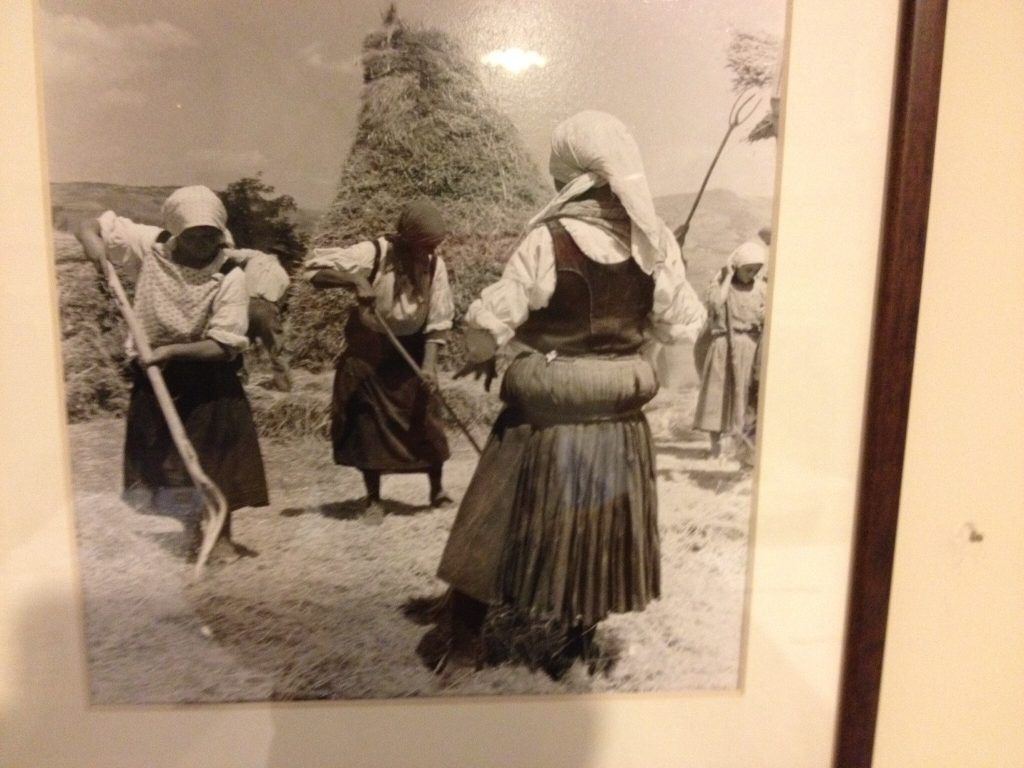
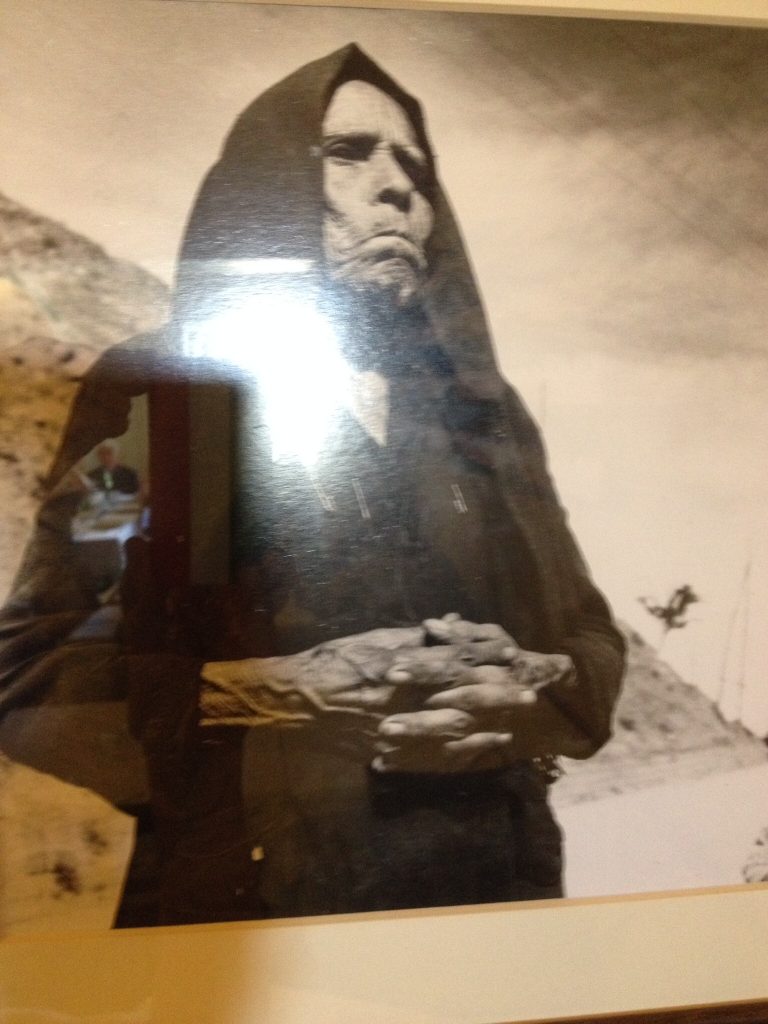
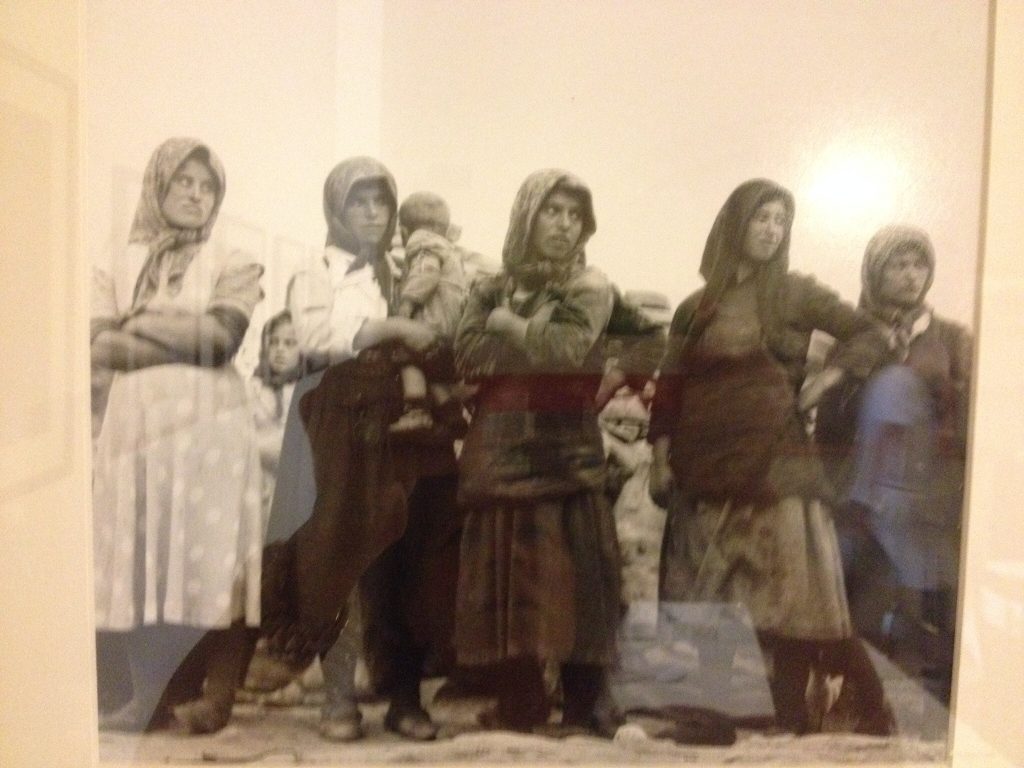
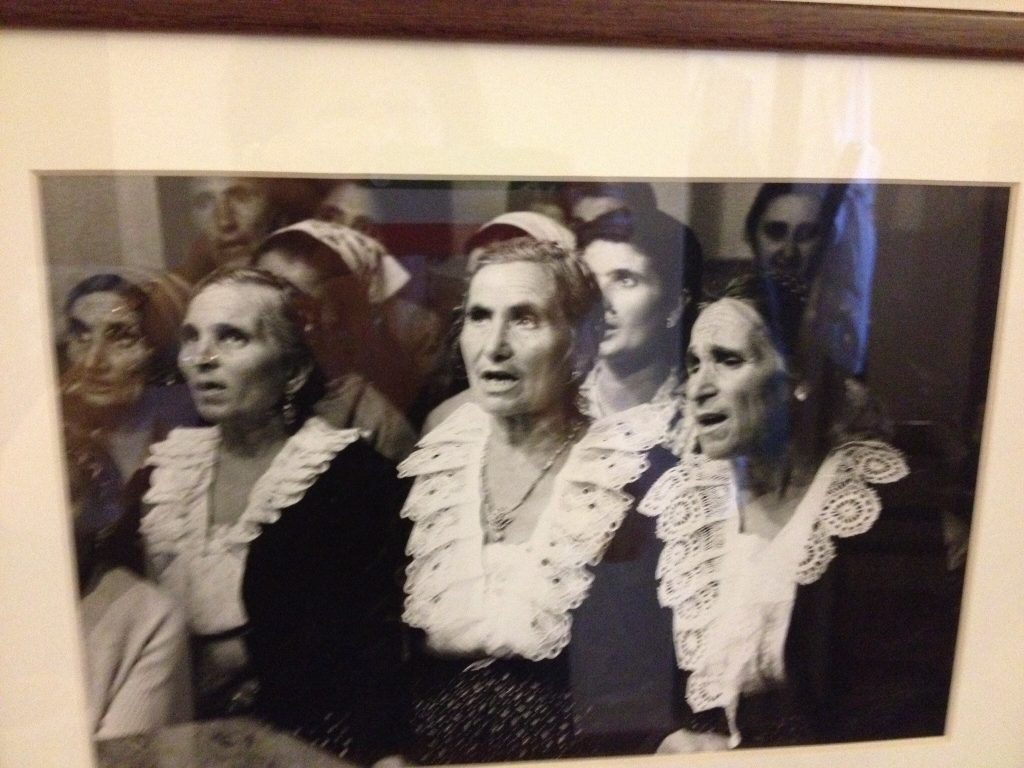
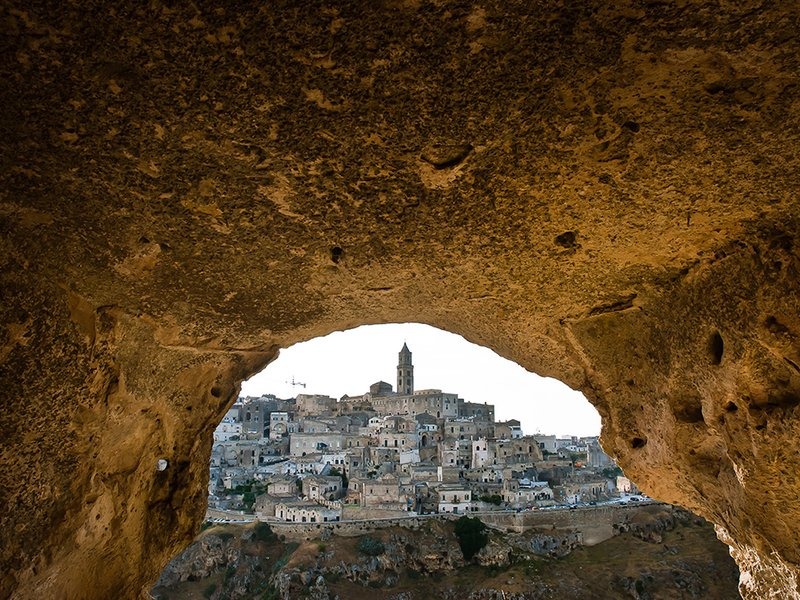
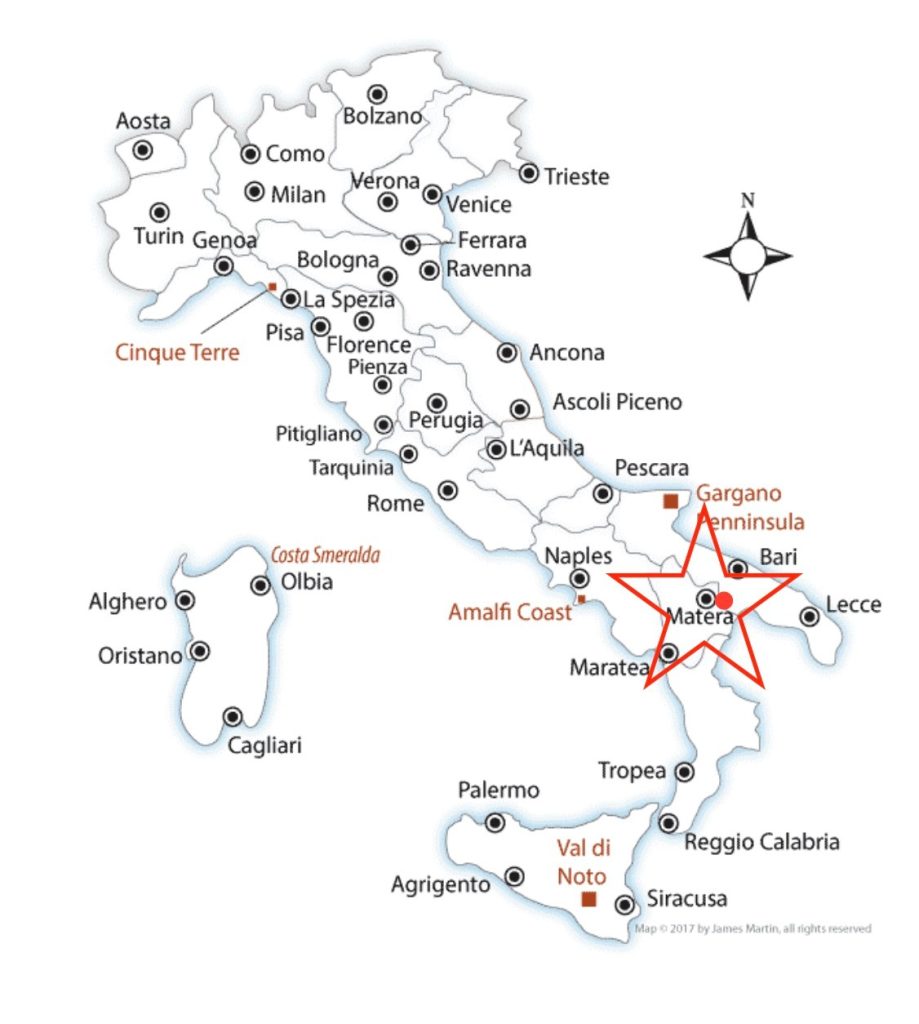
0


